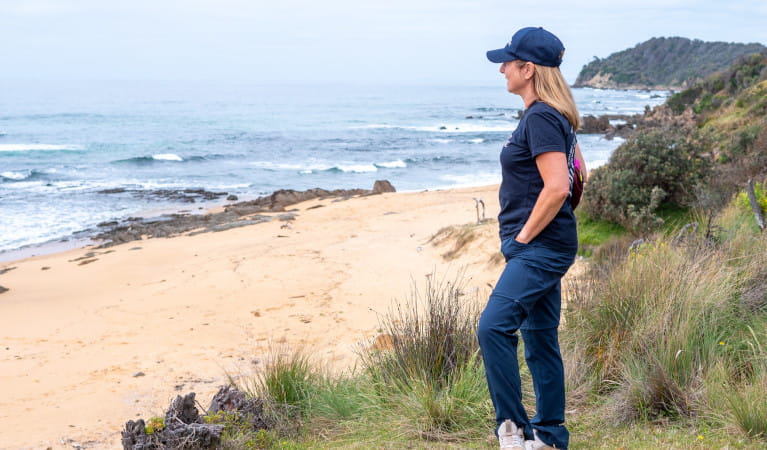Forest meets the sea guided walk
Mimosa Rocks National Park
Overview
Experience some of the best coastal views Mimosa Rocks National Park has to offer on this exciting guided walk with Navigate Expeditions.
- When
- Contact Navigate Expeditions for tour dates.
- Where
- Mimosa Rocks National Park in South Coast
- Accessibility
- No wheelchair access
- Grade
- Medium. Moderate level of fitness required.
- Price
- Contact Navigate Expeditions for pricing.
- Bookings
- Bookings required. Book online or email or call Navigate Expeditions on 1300 030 902.
Join this three-hour guided walk along the coast of Mimosa National Park. You'll learn about the interesting historical, cultural and natural features this beautiful area has to offer.
Meet your experienced Navigate Expeditions guide at Bithry beach carpark. From there, your guide will drive you a short distance to Middle beach where you'll start your adventure.
Take in the stunning scenery as you traverse cliff tops, headlands and timbered woodlands. There's a good chance you'll spot some of the abundant wildlife along the way. Keep an eye out for eastern grey kangaroos, swans, and whales in the right season. There'll be plenty of opportunities to stop, rest and appreciate the peaceful scenery too.
Navigate Expeditions is a licensed commercial tour operator with an Parks Eco Pass.
Local alerts
For the latest updates on fires, closures and other alerts in this area, see https://www.nationalparks.nsw.gov.au/things-to-do/guided-tours/forest-meets-the-sea-guided-walk/local-alerts
Operated by

Park info
- in Mimosa Rocks National Park in the South Coast region
Mimosa Rocks National Park is always open but may have to close at times due to poor weather or fire danger.
Visitor info
All the practical information you need to know about Forest meets the sea guided walk.
Getting there and parking
Get driving directions
Contact Navigate Expeditions for directions.
Parking
Contact Navigate Expeditions for information on parking.
Maps and downloads
Accessibility
Disability access level - no wheelchair access
Not wheelchair-accessible. Contact Navigate Expeditions for wheelchair-accessible private bookings.
Learn more
Forest meets the sea guided walk is in Mimosa Rocks National Park. Here are just some of the reasons why this park is special:
Ancient connections
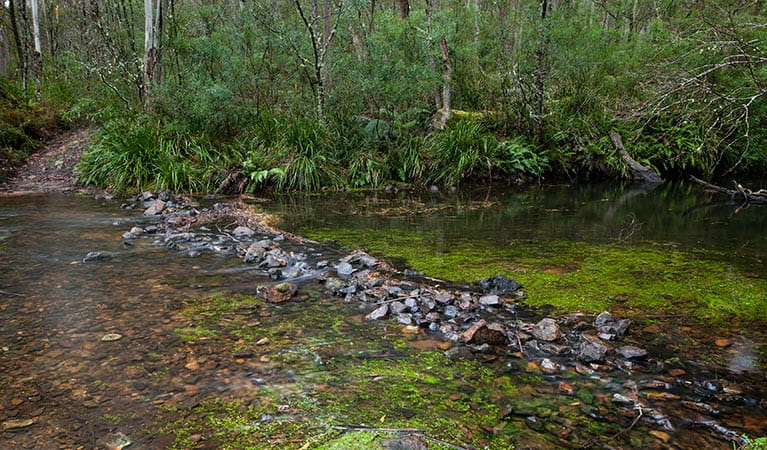
Mimosa Rocks National Park lies within the traditional Country of the Yuin people who have inhabited the region for thousands of years, climbing these headlands, swimming in the rivers and lakes, crossing the sand dunes and walking the beaches. The plants and animals within the park were a source of food, medicine and shelter for the Yuin people and the park's landscape is strongly connected to Dreaming stories. Be sure to take the Mimosa Rocks walk for an insight into the Aboriginal heritage within the park.
- Living Country living culture Join us for Living Country, living culture – a Stage 1 HSIE excursion in Mimosa Rocks National Park. An Aboriginal guide will help students understand the importance of culture and caring for Country.
- Living Country, living culture Join us for Living Country, living culture – a Stage 2 HSIE excursion in Mimosa Rocks National Park. In this cross-curricular program, an Aboriginal guide will help students understand the importance of culture and caring for Country.
- Mimosa Rocks walking track Great for walking with children, the easy Mimosa Rocks walk takes you along a short boardwalk to a lookout. You may spot the Mimosa shipwreck on the rocks below.
Bygone eras
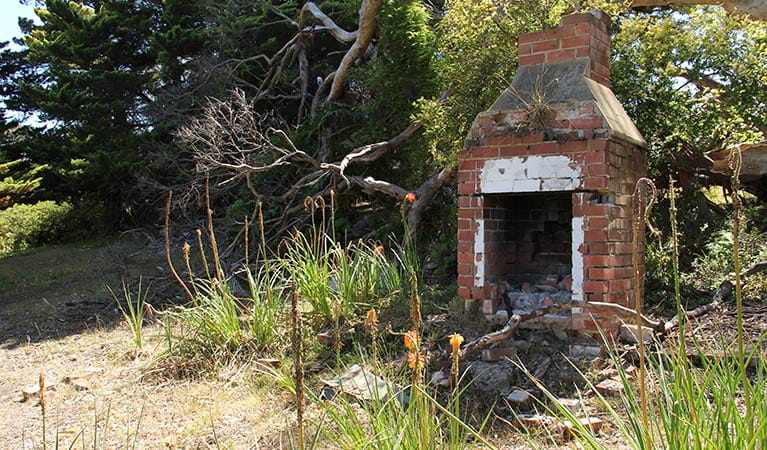
White settlers arrived in the Bega Valley in the 1830s, attracted by its grazing and farming potential, with Bega township being established in 1851. In its earliest years the town traders used Moon Bay as a regional port shipping Timber and sheep products from its sheltered waters. You can still see a log-slide and mooring ring from bygone days, or take a walk to 'Riverview' in the park's south-east, the remains of these historic premises have important associations with the 19th century timber and coastal shipping industries.
- Mimosa Rocks walking track Great for walking with children, the easy Mimosa Rocks walk takes you along a short boardwalk to a lookout. You may spot the Mimosa shipwreck on the rocks below.
- Moon Bay A short and easy walking track descends steeply to the secluded beach at Moon Bay in Mimosa Rocks National Park. Enjoy a picnic on the sand and explore the historic heritage of the area.
Plant spectacular
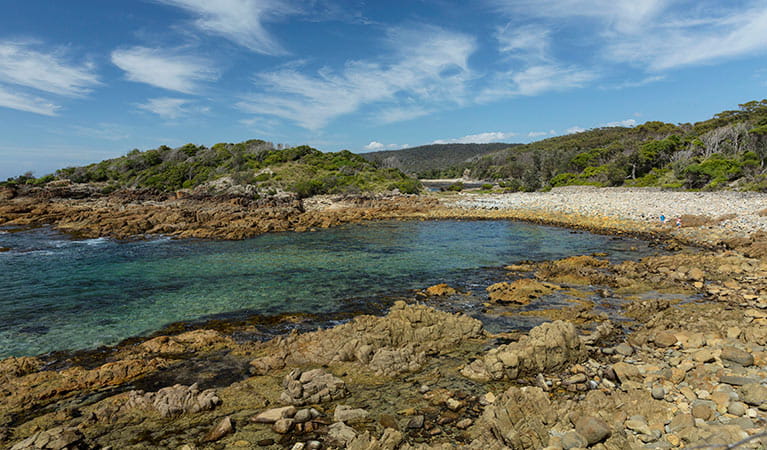
When you’re driving from the south and about to cross the Bega River, you are sure to notice the knife edge boundary of spotted gum, with an understorey of burrawang palms; characteristic vegetation of Mimosa Rocks National Park. When exploring the dunes and cliffs of the park you’ll see coastal banksia, coast wattle and drooping she-oak that can withstand winds and salty air. Check the gullies for the tubular flowers of the endangered chefs hat correa, so called because it’s a similar shape to a chef’s hat.
- Forest meets the sea guided walk Experience some of the best coastal views Mimosa Rocks National Park has to offer on this exciting guided walk with Navigate Expeditions.
- Merimbula guided photography tour Capture Merimbula’s stunning scenery on this unique tour guided by Mark Gray Gallery and Photography Tours. It’s a great way to learn new photography skills while exploring this magical area.
- Mimosa Rocks walking track Great for walking with children, the easy Mimosa Rocks walk takes you along a short boardwalk to a lookout. You may spot the Mimosa shipwreck on the rocks below.
- Moon Bay A short and easy walking track descends steeply to the secluded beach at Moon Bay in Mimosa Rocks National Park. Enjoy a picnic on the sand and explore the historic heritage of the area.
Wildlife haven
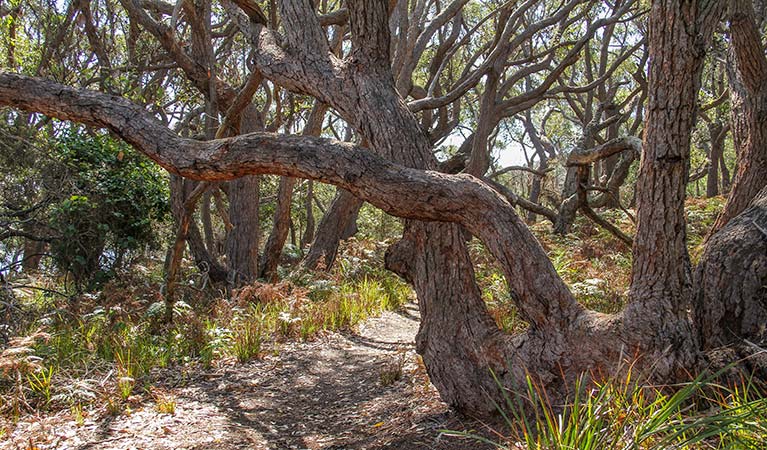
The park provides refuge for koalas, swamp wallabies and ringtail possums, to name a few. Of an evening at Aragunnu campground, you may not see yellow-bellied gliders flitting between trees, but you might be able to hear their distinctive cackling sound that cuts through the silence of the night. At Gillards campground you may well see a long-nosed potoroo. About the size of a rabbit, they look quite similar to a bandicoot, except that they hop in a similar way to a kangaroo. The potoroo is nocturnal, so you are most likely to see them in the evening. The park is an important stop for many migratory birds that nest along the park’s coastline. Look along the beaches and rock platforms – you may see threatened hooded plovers or pied oystercatchers. The bar-tailed godwit stops by briefly in summer during its migration from Alaska to New Zealand. It’s a well deserved stop off as the bar-tailed godwit makes the longest known non-stop flight of any bird and the longest journey without pausing to feed by any animal. Look for them around the park’s lakes and lagoons.
- Forest meets the sea guided walk Experience some of the best coastal views Mimosa Rocks National Park has to offer on this exciting guided walk with Navigate Expeditions.
- Wajurda Point lookout Wajurda Point lookout, in Mimosa Rocks National Park offers coastal and ocean views with seasonal whale watching opportunities.
Plants and animals protected in this park
Animals
-
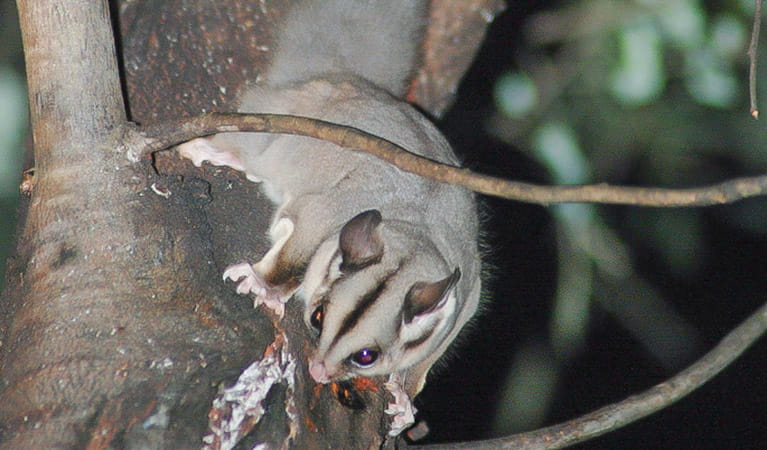
Sugar glider (Petaurus breviceps)
The sugar glider is a tree-dwelling Australian native marsupial, found in tall eucalypt forests and woodlands along eastern NSW. The nocturnal sugar glider feeds on insects and birds, and satisfies its sweet tooth with nectar and pollens.
Plants
-
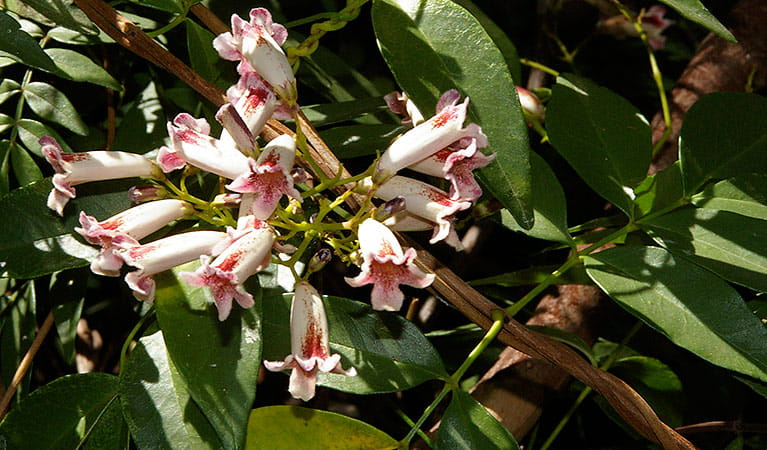
Wonga wonga vine (Pandorea pandorana)
The wonga wonga vine is a widespread vigorous climber usually found along eastern Australia. A variation of the plant occurs in the central desert, where it resembles a sprawling shrub. One of the more common Australian native plants, the wonga wonga vine produces bell-shaped white or yellow flowers in the spring, followed by a large oblong-shaped seed pod.
-
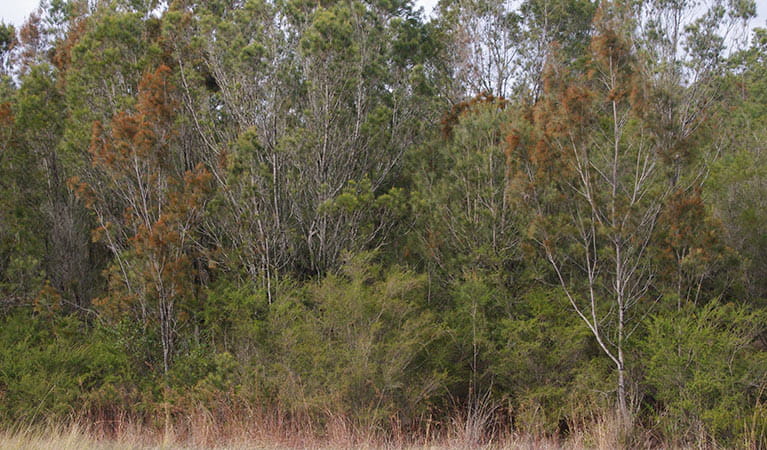
Black sheoak (Allocasuarina littoralis)
The black sheoak is one of a number of casuarina species found across the east coast of Australia and nearby tablelands. Growing to a height of 5-15m, these hardy Australian native plants can survive in poor or sandy soils. The barrel-shaped cone of the black sheoak grows to 10-30mm long.
-
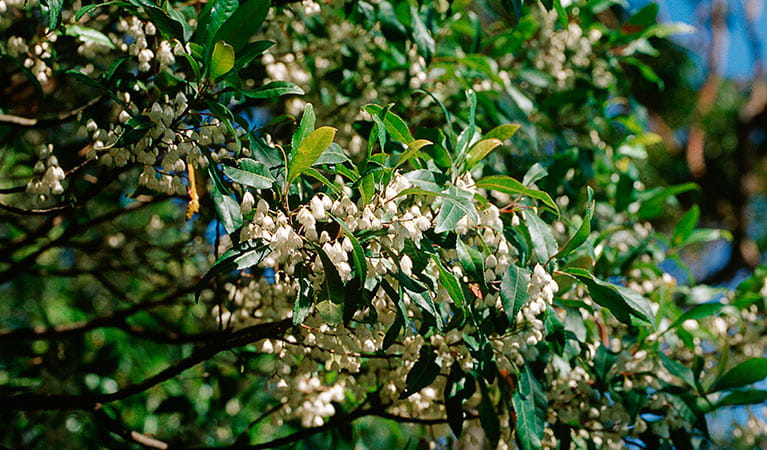
Blueberry ash (Elaeocarpus reticulatus)
The blueberry ash is a rainforest shrub which produces blue olive-shaped berries and spectacular bell-shaped flowers, which often appear on the plant together. It is a tall slender shrub or small tree found in rainforest, tall eucalypt forest and coastal bushland in eastern NSW, south-east Queensland and Victoria.
-
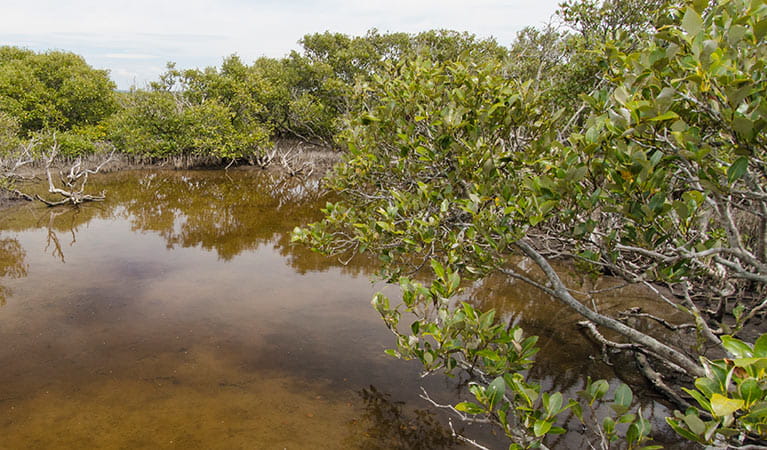
Grey mangrove (Avicennia marina)
Grey mangrove is the most common and widespread mangrove found within intertidal zones across Australia, and throughout the world. Growing to a height of 3-10m, they thrive best in estuaries with a mix of fresh and salt water. They excrete excess salt through their long thick leaves, and absorb oxygen through their aerial root system.

